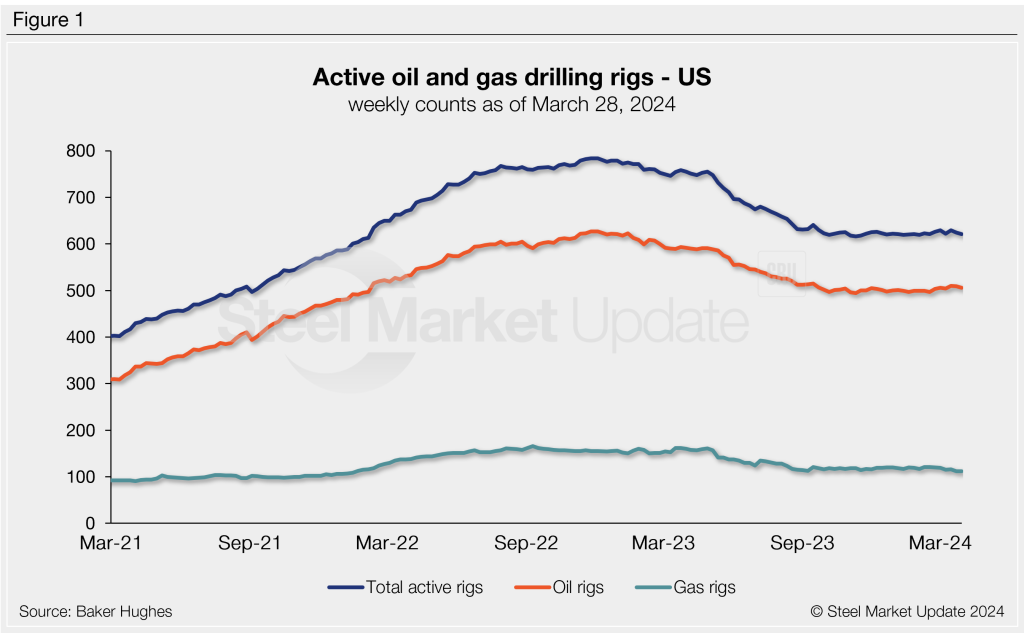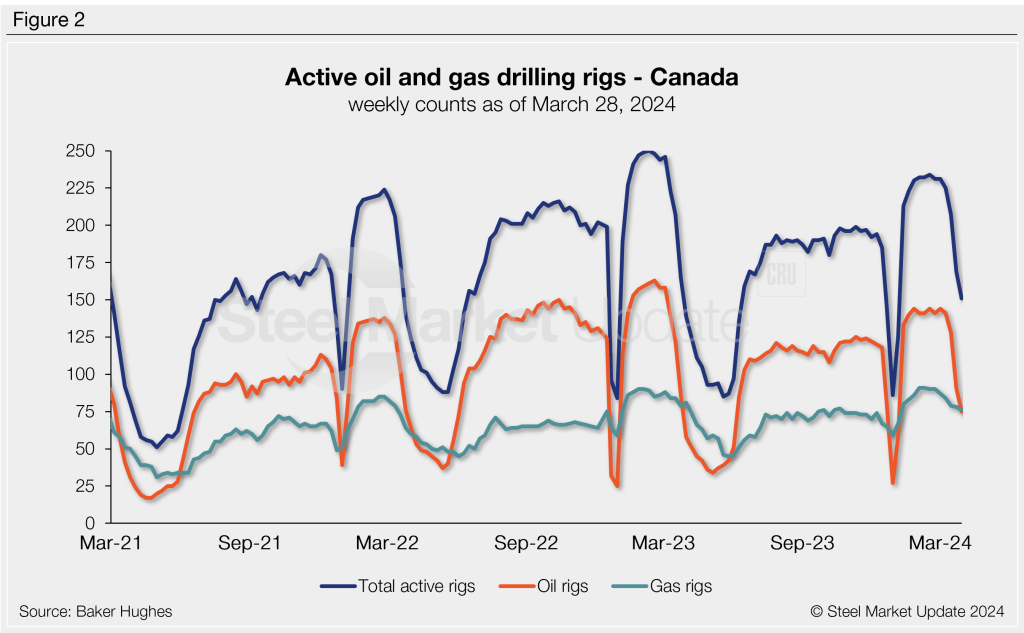OCTG

Rig counts move lower again in US, Canada
Written by David Schollaert
March 28, 2024
Oil and gas drilling activity in North America continued to slow this week, according to the latest figures from Baker Hughes.
After reaching a six-month high two weeks ago, the number of active rigs in the US eased for a second consecutive week. In Canada, drilling activity continued its seasonal wind-down.
US rigs
The number of active rotary rigs in the US decreased by three from the week prior to 621. Oil rigs fell by three to 506, gas rigs were flat at 112, and miscellaneous rigs held steady at three.
In the week ended March 28, there were 134 fewer active rigs in the US than during the same week last year. In this time, the oil rig count has fallen by 86 and gas rig count by 48, while miscellaneous rigs were unchanged.

Canadian rigs
The number of operating oil and gas rigs in Canada declined by 18 to 151 this week. Oil rigs fell by 16 to 75 this week, while gas rigs declined by two to 76.
Canadian drilling experiences these seasonal declines every spring as warmer weather sets in and thawing ground conditions limit access to roads and sites.
Drilling levels in Canada are up by 12 rigs compared to this time last year. The number of active oil rigs is up by 17, while gas rigs are down by five.

International rig count
The international rig count is updated monthly. The total number of active rigs for February was 958, down seven from January, but up 43 from February 2023.

The Baker Hughes rig count is important to the steel industry because it is a leading indicator of demand for oil country tubular goods (OCTG), a key end market for steel sheet. A rotary rig rotates the drill pipe from the surface to either drill a new well or sidetrack an existing one. For a history of the US and Canadian rig counts, visit the rig count page on our website.

David Schollaert
Read more from David SchollaertLatest in OCTG

Oil and gas drilling pulls back considerably in Canada, steady in US
US rig counts remain slightly above multi-year lows, while Canadian activity is tapering off following a seasonal peak.

Ten OCTG importers found guilty of duty evasion
Ten US importers are on the hook to pay two years’ worth of anti-dumping and countervailing duties that US Customs says they had tried to illegally evade.

Drill rig activity increases slightly in US and Canada
US rig counts remain just above multi-year lows, while Canadian activity is within earshot of a seven-year high.

US rig counts inch up again, Canadian activity slips
The latest oil and gas rig count in the US increased slightly from last week, while Canadian activity edged lower, according to Baker Hughes.

Union workers at Welded Tube of Canada locked out since Christmas
Locking out its union employees two days before Christmas, Welded Tube's behavior has been very "Grinch-like," according to the USW.
